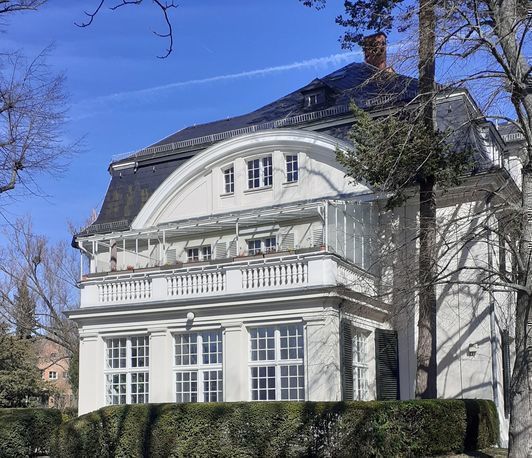Quantum mixtures of atoms and ions: road to ultracold
- MP Department Seminar
- Date: Jul 5, 2024
- Time: 09:30 AM - 10:30 AM (Local Time Germany)
- Speaker: Carlos Sias
- Istituto Nazionale di Ricerca Metrologica, INRiM, Italy, see https://lens.unifi.it/aboutus/profile/carlo-sias
- Location: Haber Villa
- Room: Seminar Room
- Host: Department of Molecular Physics
- Contact: valtolina@fhi-berlin.mpg.de

Ultracold atoms and trapped ions are among the most formidable sources of coherent matter available in a laboratory. In a hybrid quantum system of atoms and ions, ultracold atoms and trapped ions are combined in a single experimental apparatus, thus realizing an innovative platform to experimentally investigate open problems of quantum physics from a new standpoint. An atom-ion hybrid system not only brings together the advantages of each single physical system, but moreover gives rise to atom-ion interactions, which can be used as a new tool in the “quantum toolbox”.
In the talk, I will review some of the most recent results in atom-ion physics,
including the use of atom-ion collisions for sympathetically cool the ions, and
the applications in molecular physics. I will report on the strategy we are
pursuing to reach a coherent control of atom-ion interactions. In particular, I
will show a new trap that we have conceived for confining ions only with static
electric and optical fields. This electro-optical trap is embedded with a Paul
trap, which was designed in order to maximize the trap matching between the two
confining potentials.
The specific geometry of these traps [1] make it possible to continuously
change the arrangement of the ions from a one-dimensional string to a
two-dimensional crystal, and to study specific phenomena in two-dimensional
crystals of ions, such as the occurrence of orientational melting [2], and the
formation of metastable, “isomeric” states of the crystal.
[1] E. Perego, et al.
Appl. Sci. 10, 2222 (2020)
[2] L. Duca, et. al. Phys. Rev. Lett. 131, 083602 (2023)